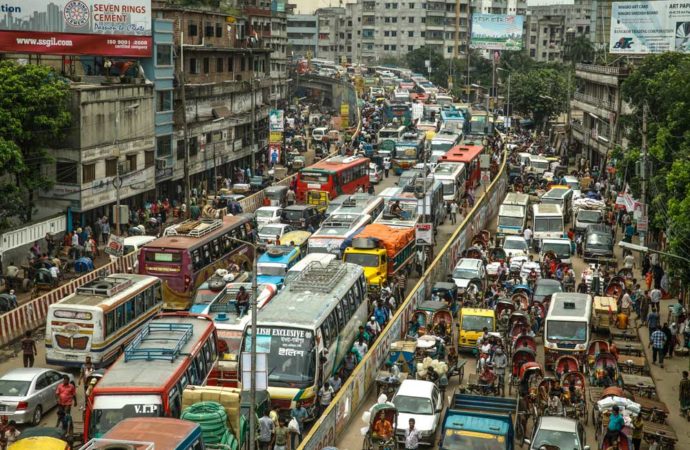By, Mathew David Viccars
Dhaka, September 29 (UNDP): It’s common for a short commute across Dhaka (let’s say 7km) to take longer than an hour through perpetually gridlocked traffic.
Transport is a big problem for anyone who needs to move about in this mega-city and it affects all residents rich and poor alike, stealing their time and exposing them to unnecessary pollution and stress every day.
Dhaka’s now infamous traffic jams keeps people from their families and has been equated to a loss of US$ 4.86 billion a year.
Now we’re avid (sometimes fanatical) supporters of public transport and cycling here at the UNDP. In fact in the last few years, cycling’s caught on massively among young people! So the solution to us was clear, let’s install bus and bike lanes.
If that’s all it took to fix Dhaka’s choked transport system it would have been done long ago. We quickly recognized that other organizations and people, many smarter than us, have considered this problem before. Indeed literally billions of dollars are being poured into transport infrastructure but we had a feeling something might have been missed.
So we turned to design thinking to see if we could find the elusive problem. We couldn’t be certain but wanted to make sure that in their quest to build trains in the sky, the planners hadn’t overlooked the crux of the problem.
A team of thinkers from across the UNDP identified a dizzying array of causes from weak enforcement of traffic rules to erratic and undisciplined driver behavior. Each had a solution requiring the simple application of time and resources, and we were heartened to find that in most cases something was already being done about them.
Indeed, we found that the UNDP, through the ongoing Bangladesh Urban Forum was already working on removing people’s need to travel as much by advocating better urban planning. But there had to be something more to it than these simple logistical and infrastructure issues, and there was.

We kept on coming up against a simple physical reality, Dhaka wasn’t designed with modern transport in mind.. There are simply too few roads for its area and population. And the economy has been growing at over 5 per cent annually for the past decade, meaning infrastructure cannot keep up with growing demands of an ever-widening prosperous middle class.
If Dhaka is to ever have a free flowing and effective transport system then it must carry more people in less space. We realize that this means the car, the least efficient form of human transport, must play a nominal role in whatever solution we were going to come up with.
There are only 200,000 cars registered in Dhaka, about 3 cars per 1000 people nationally, which is far below developed countries which can reach over 700 cars for every 1000 citizens. However they are said to take up 70 percent of the road space!
In 1997,they took up 39.22 percent but things move fast around here, the car population is growing by over 4 percent per year.
It only takes one look at Dhaka public transport, or its brutal tropical summer months, to guess why people prefer cars over buses or cycle-rickshaws. But cars are clearly a serious problem in the transport system, and one that will not be addressed even with a multi-billion dollar infrastructure investment or better road management.
So we think we’ve found our missing problem. Unless cars, the preferred choice of transport for Dhaka’s prosperous middle and upper classes, start to make way for mass transit or at least better public transport, Dhaka’s gridlock will never be overcome.
Now where to from here? A couple of questions come to mind, and we’re also looking to people outside the organization who feel strongly about the issue to help us crack this open:
- a) How do we discourage private vehicle use? Specifically, how do we provide a viable and acceptable alternative which will be accepted by car owners and how do we encourage them to use it?
- b) What are the interesting and innovative solutions other megacities have come up with to deal with gridlocks and over-reliance on private transport?




























































